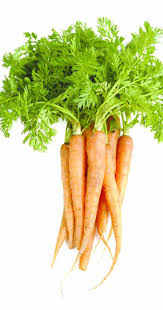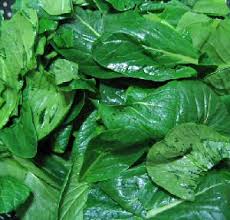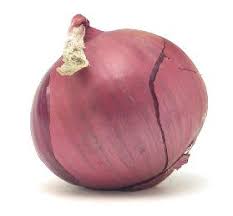Vegetables are a healthy part of any diet. Whether you're interested in sculpting your body, or just want to tone it that extra bit, vegetables help in improving your overall health by maximizing your weight loss efforts.

It is said that just eating 8-9 servings of vegetables in a day, you can improve your body's immunity against diseases such as diabetes, cancer and heart ailments. But which vegetables are better disease-fighters than others? Here are top 10 vegetables for a healthy diet, that definitely set the ball rolling.

Tomatoes. Technically called a fruit, tomatoes are mostly eaten as a well-liked vegetable. Tomatoes have lycopene and red orbs which are well known for their cancer-defending properties. They are full of Vitamin A and Vitamin K which help in keeping your blood pressure levels under control.

Broccoli. When one talks about vegetables which can fight diseases effectively, broccoli ranks amongst the highest. They are a storehouse of antioxidants which help in fighting rectal, lungs and stomach cancers. They are also rich in folate, Vitamin C and beta-carotene which help in boosting your immunity to fight against colds and flus.

Brussels sprouts. Excellent for pregnant women, these little veggies are full of B-vitamin and folic acid which keeps women away from uteral tube defects. They are also quite rich in omega 3 fatty acids, potassium, fiber and Vitamin C and K.

Carrots. Carrots are full of nourishing properties for eyes, hair and skin. They are the best source of pro-vitamin and A carotenes. Known for improving night vision, carrots are rich in Vitamin C, Vitamin A which helps in regulating healthy blood sugar levels - good for the heart.

Asparagus. Again, an excellent food for pregnant women, asparagus is full of fiber, folate and Vitamin B6 qualities which help in maximizing heart's health. These long veggie sticks are also pretty low in sodium and high in potassium content, which makes them ideal for the healthy working of our large intestine.

Sweet potatoes. Grown under earth, sweet potatoes are full of ant-defending qualities as they are rich in manganese, Vitamin A and Vitamin C. Good for our digestive system, they are full of iron and fiber which helps in giving us good amounts of energy.

Eggplants. Eggplants have a unique antioxidant in them like nasunin (a complex compound which defends your brain cells against damage). Many studies have proved that they are good for lessening your risk of stroke and dementia as they are packed with fiber and potassium. The best quality about eggplants is that they are pretty low in calories, thus they have a positive effect on one's heart health.

Bell peppers. Whichever colour of bell peppers you may go for - red, orange or yellow- they are full of heart-healthy properties because of folic acid and lycopene present in them. Again, they have been substantially proved to lower your risk again cancer too.


Spinach. Popeye the sailor was quite right when crediting his muscle power to this green leafy vegetable. It is believed that spinach contains around 13 flavonoid compounds which keep us away from cancer, heart diseases and osteoporosis.

Onions. Including onions in your daily food intake, gives your body's immunity levels a royal boost. They are full of peptide known as GPCS which helps in keeping your body's calcium level under control. Packed with Vitamin C and folate, onions promote good cardiovascular and gastrointestinal health.
It is said that just eating 8-9 servings of vegetables in a day, you can improve your body's immunity against diseases such as diabetes, cancer and heart ailments. But which vegetables are better disease-fighters than others? Here are top 10 vegetables for a healthy diet, that definitely set the ball rolling.
Tomatoes. Technically called a fruit, tomatoes are mostly eaten as a well-liked vegetable. Tomatoes have lycopene and red orbs which are well known for their cancer-defending properties. They are full of Vitamin A and Vitamin K which help in keeping your blood pressure levels under control.
Broccoli. When one talks about vegetables which can fight diseases effectively, broccoli ranks amongst the highest. They are a storehouse of antioxidants which help in fighting rectal, lungs and stomach cancers. They are also rich in folate, Vitamin C and beta-carotene which help in boosting your immunity to fight against colds and flus.
Brussels sprouts. Excellent for pregnant women, these little veggies are full of B-vitamin and folic acid which keeps women away from uteral tube defects. They are also quite rich in omega 3 fatty acids, potassium, fiber and Vitamin C and K.
Carrots. Carrots are full of nourishing properties for eyes, hair and skin. They are the best source of pro-vitamin and A carotenes. Known for improving night vision, carrots are rich in Vitamin C, Vitamin A which helps in regulating healthy blood sugar levels - good for the heart.
Asparagus. Again, an excellent food for pregnant women, asparagus is full of fiber, folate and Vitamin B6 qualities which help in maximizing heart's health. These long veggie sticks are also pretty low in sodium and high in potassium content, which makes them ideal for the healthy working of our large intestine.
Sweet potatoes. Grown under earth, sweet potatoes are full of ant-defending qualities as they are rich in manganese, Vitamin A and Vitamin C. Good for our digestive system, they are full of iron and fiber which helps in giving us good amounts of energy.
Eggplants. Eggplants have a unique antioxidant in them like nasunin (a complex compound which defends your brain cells against damage). Many studies have proved that they are good for lessening your risk of stroke and dementia as they are packed with fiber and potassium. The best quality about eggplants is that they are pretty low in calories, thus they have a positive effect on one's heart health.
Bell peppers. Whichever colour of bell peppers you may go for - red, orange or yellow- they are full of heart-healthy properties because of folic acid and lycopene present in them. Again, they have been substantially proved to lower your risk again cancer too.
Spinach. Popeye the sailor was quite right when crediting his muscle power to this green leafy vegetable. It is believed that spinach contains around 13 flavonoid compounds which keep us away from cancer, heart diseases and osteoporosis.
Onions. Including onions in your daily food intake, gives your body's immunity levels a royal boost. They are full of peptide known as GPCS which helps in keeping your body's calcium level under control. Packed with Vitamin C and folate, onions promote good cardiovascular and gastrointestinal health.